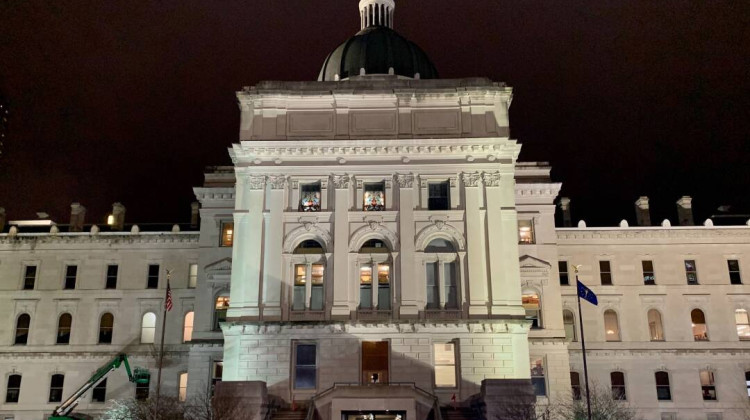
A biologist with the U.S. Fish and Wildlife Service holds up an eastern hellbender during a survey in 2009.
USFWS/Wikimedia CommonsSnot otter, mud dog, Allegheny alligator, old lasagna sides. Those are just a few names for the hellbender. It’s the largest salamander in the U.S. and known for the wrinkly skin on its sides.
Water pollution and habitat destruction have caused Eastern hellbender populations to go down. As a result, about the only place they’re found in Indiana today is the Blue River watershed — which covers parts of Clark, Crawford, Floyd, Harrison, and Washington counties.
Though other zoos have bred hellbenders artificially, Mesker Park Zoo in Evansville claims to be the first to breed the Eastern hellbender naturally.
Rod Williams is the principal investigator for hellbender research at Purdue University. He said being able to breed them naturally opens up more opportunities to bring hellbender populations back.
“Rear those eggs in captivity and then use that essentially as a reservoir to release animals back into the wild throughout the historic range here in Indiana," Williams said.
Williams said Purdue has worked with Mesker Park Zoo, the St. Louis Zoo, and other organizations collaboratively to help bring hellbenders back.
Leigh Ramon is the assistant animal curator at Mesker Park Zoo. She said Mesker hopes to breed younger hellbenders in the future to have a more viable batch of eggs. As of early December, only one egg from this first clutch has survived.
“Hopefully in the next few weeks it should be hatching out. So we're obviously monitoring that really closely and awaiting every step as proud parents do," Ramon said.
Landowners can help hellbenders by working to keep fertilizer, pesticides, oil, leaves, and pet waste out of streams and storm drains. You can learn more about how to help hellbenders here.
Contact Rebecca at rthiele@iu.edu or follow her on Twitter at @beckythiele.
Indiana Environmental reporting is supported by the Environmental Resilience Institute, an Indiana University Grand Challenge project developing Indiana-specific projections and informed responses to problems of environmental change.
 DONATE
DONATE








 Support WFYI. We can't do it without you.
Support WFYI. We can't do it without you.